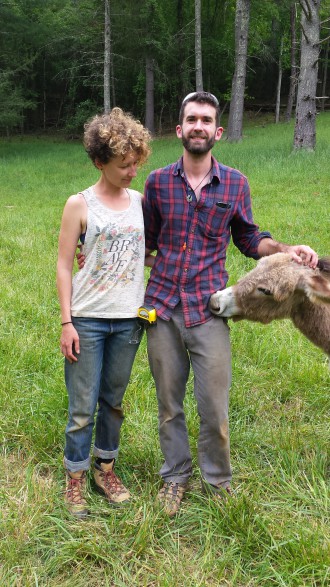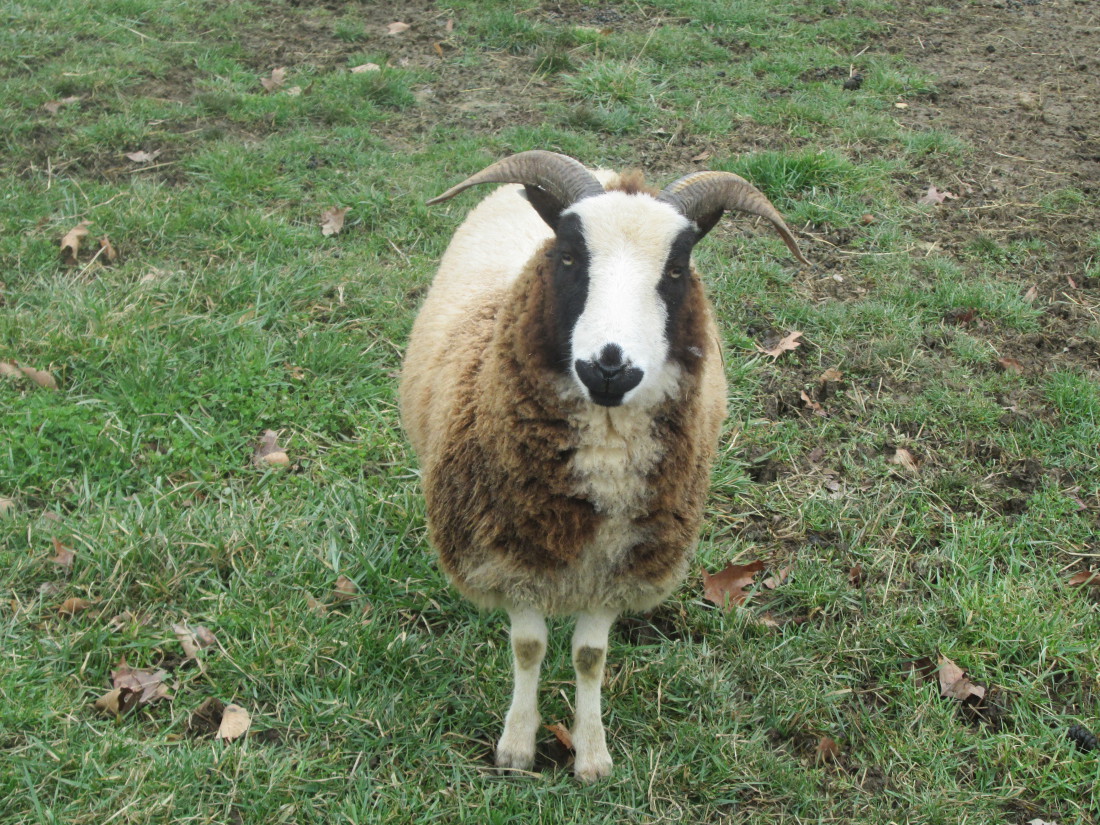Plant-based quilting, weaving and basket-making have long had a place in traditional Appalachian culture. Today, however, farmers and artists alike are increasingly looking to sheep, goats and even alpacas and llamas to revitalize Western North Carolina’s rich and varied fiber arts scene. And some local farmers are gravitating to heritage breeds rather than more specialized modern hybrids.
These passionate agriculturists say they’re not really in it for the money: According to Frank Ritz of Gather Heritage Farm in Barnardsville, heritage farming is “almost like a labor of love.” But by helping to preserve these animals’ ancient bloodlines, they’re providing a hedge against the risks of monoculture — and infusing some new but old life into the fiber arts.
What are heritage breeds, anyway?
According to The Livestock Conservancy, a nonprofit based in Pittsboro, N.C., defining what constitutes a heritage breed is more art than science. These animals originated from archaic lines that were developed to work well in small family-farm settings. Instead of being bred for one specific function, heritage animals typically have multiple uses.
For our ancestors, this was a practical matter: Why raise different breeds for meat and fiber, for example, if one can meet both needs? But these animals’ dual nature is responsible for their fall from favor with modern, conventional farms that demand the highest possible yields. Heritage breeds tend to produce wool that’s less fine, less consistent in terms of things like color and length of fibers, and thus less in demand.
So in the short term, species bred for a single characteristic — quality of fleece, say, or fast maturation for meat consumption — may be more profitable. Over time, though, other qualities tend to be diminished, leaving modern breeds more vulnerable to diseases.
“If we don’t preserve the characteristics, it leaves animals vulnerable,” notes Peirce Bingham of Bingham Family Farm in Burnsville, who raises Arapawa goats. “Breeding for specific characteristics can mean breeding out things we aren’t really aware of.”
Heritage breeds, on the other hand, may be hardy and easy to raise, yet they’re often threatened due to their relative lack of popularity. There simply aren’t enough breeding groups to ensure healthy bloodlines for future generations. Today’s heritage breed farmers are working to address that shortage, however.
The animals lead the way
The Jacob sheep is a popular heritage fiber animal in WNC, due primarily to the wool’s workability. Where most primitive sheep breeds have a coarse outer coat that can make the wool less useful for many applications, the Jacob has a medium-fine fleece with no outer coat. Both the fineness and the coloration vary from animal to animal, says Elizabeth Strub of Hobbyknob Farm in Weaverville, but this is desirable, because breeders are trying to preserve genetic diversity rather than create a uniform product.
Strub first started looking into raising animals in 2000 and eventually became interested in the Jacob, which is hardy and easy to raise. The breed is also good for meat, but Hobbyknob’s sheep are used strictly for fiber. Small enough to be easily handled, with a strong maternal instinct, they’re also highly adaptable to a wide range of environments and settings.
Frank Ritz also breeds Jacob sheep. His farming philosophy is to “help nature do what it already knows how to do.” Heritage farming, he believes, is “about giving the animals an environment where they can thrive and really promote their natural instincts.” At Gather Heritage Farm, the animals lead the way, and the people learn what’s needed by observing them carefully.
And though The Livestock Conservancy considers the Jacob sheep “threatened,” the Jacob Sheep Breeders Association is working with the animals’ characteristics and adaptability to keep them from becoming extinct.
The right thing to do

At Rusted Earth Farm in Leicester, Kyle Guie and Jessica Sanchez are just beginning to get to know their flock of 13 Navajo-Churro ewes. These young farmers have a growing vision of heritage farming with an emphasis on agritourism. As their interest in livestock breeds grew, raising heritage animals seemed to be the most practical choice, since they need less day-to-day care.
In addition, says Guie, “It just seems like the right thing to do for the animals.”
As the name suggests, Navajo-Churro sheep were important to Native American cultures in the Southwest. Originally brought to the Americas by Spanish explorers, the sheep were adopted by the Navajo and other native cultures. Like other primitive breeds, Navajo-Churros have a heavy outer coat that accounts for a large percentage of the fleece. For this reason, the resulting yarns are usually used to weave rugs.
As with the Jacob sheep, the Navajo-Churros’ genetic diversity is evident in their coats, and they’re similarly easy to care for. Guie says he feels as though he and Sanchez are just shepherding the animals rather than actively managing them.
And while serving a niche market may not be lucrative, for these breeders, the focus is more on loftier goals: preserving a part of our past and investing in the future of humans’ relationship with livestock.




A few years ago I became interested in helping advance a dying breed, the Dexter cattle. After contacting the said conservancy and letting them hook me up with some few farmers that did reproduce this breed I came away totally unimpressed and actually insulted. When I priced a young bred heifer or a breeding pair, I found I was dealing with absolutely for big profit people rather than folk that were indeed wishing to preserve and spread these animals for future generations. I soon found I would never be able to afford to help this species as the initial cost was totally prohibitive. My small farm would be more than suitable to carry 10 or maybe more of these smaller cattle but it will never become reality as long as the so called “conservancy” and their overpricing policies are involved. I came away from this with a feeling it was nothing more than a group of rich idealists taking advantage of the “salvation” idea.